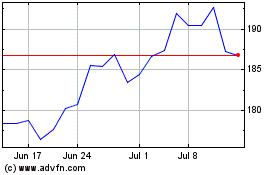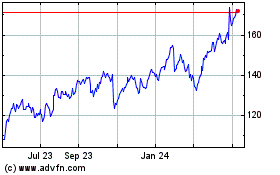How Small Ad Hoc Teams Can Tackle Big Problems
August 23 2016 - 12:01PM
Dow Jones News
By Rachel Emma Silverman
He's no Olympian, but Jake Knapp wants to get you to sprint.
Mr. Knapp, a design partner at GV, the venture-capital arm of
Alphabet Inc., says a sprint is an intense five-day session that
teams can use to tackle big, nagging problems, such as finding ways
to turn a product's free users into paying customers.
Sprint team members develop simple prototypes of their ideas,
and within days, they test possible solutions with real customers,
rather than employee stand-ins. Patterns will emerge, Mr. Knapp
says, regarding what works and what doesn't. The team can then use
this information to refine the idea or change course.
"Through the idea of prototyping and testing, the sprint team
will find out by Friday how the customer reacts, and then they can
change direction within the next few weeks," says Mr. Knapp. "That
allows them to take bigger risks."
Mr. Knapp has used the technique with companies such as the
messaging service Slack, one of GV's investments, which ran a
sprint to determine a more effective way to teach new customers how
to use the product. Mr. Knapp says the company tested two ideas,
including one suggested by Slack founder Stewart Butterfield, that
demonstrated Slack being used by teams of virtual workers, and a
more straightforward approach that guided real workers as they used
the product, step-by-step. The latter, more direct approach was
more appealing to users by the end of the sprint, Mr. Knapp
says.
Ideally, a sprint should involve a team of about seven people
from different areas of a company, including sales, marketing,
design and technology, says Mr. Knapp, co-author of the book
"Sprint," recently published by Simon & Schuster.
Team members should get permission to dedicate themselves to the
burst of creative speed for the full five days, which he recognizes
can be a hard sell for busy professionals. If they can't clear
their schedules for the full time, they should at least be
available for key appearances throughout the week.
Because of the time and resources involved, companies should
only turn to sprints for really big problems that will benefit from
a team's focused energy.
A key element to making a sprint work is being clear about who
makes decisions, he says.
"It's really important to know who the decider is," says Mr.
Knapp. "For many teams there is a lot of ambiguity about who makes
decisions. If you can't get the decider for the whole sprint, make
sure you can get her in the room for cameo appearances during the
sprint to make decisions."
A sprint works best when there is one person tasked with making
the final call for big decisions, rather than relying on a more
democratic process, he says. Team members can provide input and
feedback, but in a sprint there should be a sole decision maker.
"We want there to be a single decider to make the calls, and we
want him or her to be opinionated, says Mr. Knapp. "It becomes an
informed dictatorship."
A sprint only works if team members are open to taking risks and
willing to try ideas that may fail. "Half of the ideas are going to
be wrong, if not more, but there may be one risky idea that
actually works," he says. "The key thing to keep in mind is a
spirit of learning, instead of being cautious."
Write to Rachel Emma Silverman at rachel.silverman@wsj.com
(END) Dow Jones Newswires
August 23, 2016 11:46 ET (15:46 GMT)
Copyright (c) 2016 Dow Jones & Company, Inc.
Alphabet (NASDAQ:GOOG)
Historical Stock Chart
From Mar 2024 to Apr 2024

Alphabet (NASDAQ:GOOG)
Historical Stock Chart
From Apr 2023 to Apr 2024
